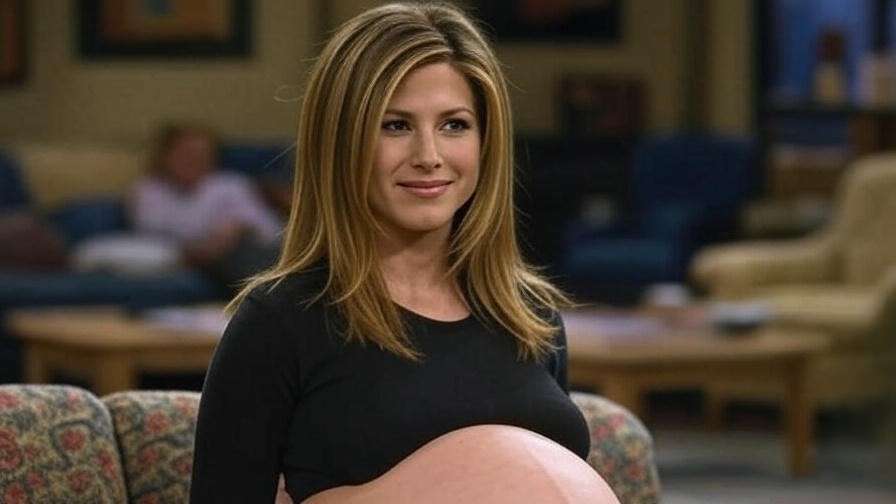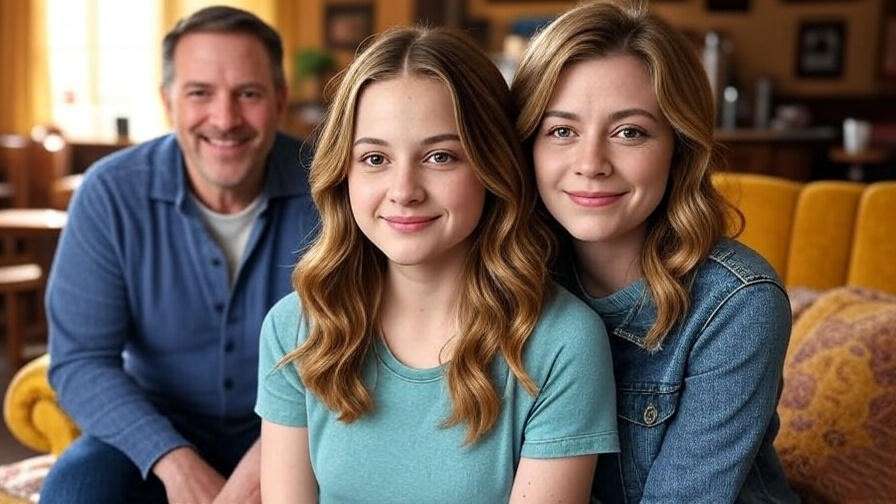Picture this: Monica’s purple apartment, cluttered with mismatched furniture, buzzes with the chaotic energy of six twenty-somethings navigating love, careers, and existential crises. It’s the Friends episode where Ross yells “pivot!” while wrestling a couch up a staircase, and Rachel’s impulsive haircut screams youthful rebellion. These raw, unfiltered moments define the “naked gte LSI keywords: Friends TV show, 90s nostalgia, relatable characters, youthful moments, sitcom nostalgia, Central Perk, ensemble cast, TV show nostalgia, coming-of-age stories.
What Are “Naked Gteens” Vibes? Defining the Raw Youth of Friends
The Essence of “Naked Gteens”
The term “naked gteens” evokes the unpolished, vulnerable essence of youth—a time when life feels raw, uncertain, and beautifully messy. In Friends, this vibe is woven into every episode. Think of Rachel fleeing her wedding in a soaked bridal gown, or Chandler masking his insecurities with sarcastic quips. These moments aren’t just plot points; they’re mirrors of the awkward, heartfelt experiences of young adulthood. The show’s genius lies in presenting characters who are flawed yet lovable, navigating their 20s with no filter—just like the “naked gteens” search intent suggests. For example, in “The One Where Ross Finds Out” (Season 2, Episode 7), Ross’s emotional outburst over Rachel’s feelings captures the raw vulnerability of unrequited love.
Why This Resonates with Audiences
Why do these moments hit so hard? Nostalgia taps into our longing for simpler times, and Friends delivers this in spades. Psychologists like Dr. Clay Routledge, who studies nostalgia at North Dakota State University, explain that revisiting familiar stories helps us process our own pasts, boosting mood and social connectedness. Friends resonates because it reflects universal struggles—job rejections, messy breakups, and the search for identity. Its global appeal is undeniable: in 2023, the show averaged 1.2 billion streaming minutes monthly on Max, per Nielsen data, proving its staying power. Fans on platforms like X share clips of Joey’s “How you doin’?” or Phoebe’s quirky songs, showing how these raw moments spark joy across generations.
How Friends Captures the Raw Moments of Youth
Relatable Characters and Their Flaws
Each Friends character embodies a slice of the “naked gteens” vibe, making them endlessly relatable. Ross Geller, the sensitive paleontologist, wears his heart on his sleeve, whether pining for Rachel or fumbling through divorces. His iconic “pivot!” meltdown in “The One with the Cop” (Season 5, Episode 16) is peak youthful frustration—trying to control chaos and failing spectacularly. Rachel Green’s arc, from spoiled runaway bride to fashion executive, mirrors the trial-and-error of finding one’s path. Monica’s obsessive tidiness hides her fear of failure, while Chandler’s humor masks deep insecurities about commitment. Joey’s childlike charm and Phoebe’s eccentric wisdom round out the ensemble, each offering a lens into the messy beauty of youth.
- Ross: His awkward rants (e.g., “The One with Ross’s Sandwich”) reflect the overthinking many experience in their 20s.
- Rachel: Her career pivot in “The One Where Rachel Quits” (Season 3, Episode 10) resonates with anyone chasing a dream job.
- Monica: Her need for control, seen in “The One with Monica’s Boots” (Season 8, Episode 10), echoes perfectionist struggles.
- Chandler: His fear of commitment, unpacked in “The One with the Proposal” (Season 6, Episode 25), speaks to relationship anxieties.
- Joey: His loyalty and simplicity shine in “The One with Joey’s New Brain” (Season 7, Episode 15).
- Phoebe: Her quirky resilience, like in “The One with Phoebe’s Wedding” (Season 10, Episode 12), inspires authenticity.

Storylines That Mirror Real Life
Friends thrives on storylines that feel ripped from our own lives. Rachel’s journey from waitress to Bloomingdale’s buyer reflects the career pivots many face in their 20s. Ross and Rachel’s on-again, off-again romance captures the rollercoaster of young love, with iconic moments like “We were on a break!” (Season 3, Episode 15) sparking endless fan debates. Monica and Chandler’s slow-burn relationship, from friends to lovers, offers a grounded take on finding love unexpectedly. Even lighter arcs, like “The One with the Embryos” (Season 4, Episode 12), where a bet over apartment ownership leads to hilarious chaos, highlight the playful camaraderie of youth. These stories resonate because they balance humor with heart, reflecting the highs and lows of growing up.
The Role of Humor and Heart
The show’s magic lies in its ability to blend raw emotion with laugh-out-loud comedy. Chandler’s sarcastic one-liners, like “Could I be more aware?” in “The One with the Blackout” (Season 1, Episode 7), mask his vulnerability, making him relatable to anyone who uses humor to cope. Phoebe’s quirky songs, like “Smelly Cat,” bring levity to her traumatic past, showing resilience through creativity. The show’s emotional peaks—like Monica’s proposal to Chandler or Rachel’s tearful goodbye in the finale—hit hard because they’re earned through authentic character growth. This balance makes Friends a comforting escape, addressing the audience’s need for both laughter and emotional connection.
Nostalgia as a Cultural Phenomenon
Why Friends Triggers Nostalgia
Nostalgia isn’t just sentimentality; it’s a psychological lifeline. Research from the Journal of Personality and Social Psychology (2018) shows nostalgia fosters a sense of belonging, especially during uncertain times. Friends taps into this by recreating the ‘90s—a pre-social media era of coffee shop hangouts and simpler social dynamics. Its iconic settings, like Central Perk, evoke a cozy familiarity, while cultural references (e.g., Ross’s love for Die Hard or Monica’s obsession with Baywatch) anchor it in a specific time. Fans in 2025, facing a fast-paced digital world, crave this slower, more human connection, making Friends a nostalgic refuge.
The Show’s Lasting Impact
Friends isn’t just a show; it’s a cultural juggernaut. Since its 1994 debut, it’s earned 62 Emmy nominations and a 2002 win for Outstanding Comedy Series. Its 2021 HBO Max reunion special drew 29% of streaming viewers that week, per Variety, proving its enduring appeal. On X, fans share memes like “Joey doesn’t share food!” or create threads ranking episodes, keeping the show alive in digital culture. Merchandise, from Central Perk mugs to Friends-themed board games, fuels its commercial legacy. This staying power stems from its universal themes—friendship, love, and self-discovery—that transcend generations.
Solving the Audience’s Need for Connection
Emotional Connection Through Nostalgia
Rewatching Friends is like revisiting your 20s, even if you weren’t born when it aired. Its raw moments—Rachel’s job struggles, Ross’s heartbreak, Monica’s family tensions—mirror our own, offering catharsis. For fans feeling disconnected in 2025’s digital age, the show provides a sense of belonging. Try hosting a Friends watch party with themed snacks (e.g., Monica’s lasagna or Joey’s pizza) to recreate the communal vibe. Journaling about how the show’s themes reflect your life can also deepen the connection, turning nostalgia into personal growth.

Building Community Through Shared Nostalgia
Friends fans thrive in communities like Reddit’s r/howyoudoin (with over 200,000 members) or X groups sharing episode clips. Engaging in these spaces—whether debating Ross and Rachel’s relationship or sharing favorite quotes—builds bonds over shared nostalgia. Practical tips:
- Join X discussions using hashtags like #FriendsTV or #90sNostalgia.
- Create a Friends-inspired quiz for friends, like “Which character are you?”
- Share a throwback photo from a Friends-themed event, like visiting a Central Perk pop-up café.
Why Friends Stands Out in the Nostalgia TV Landscape
Comparison to Other ‘90s Shows
While the ‘90s birthed iconic sitcoms like Seinfeld and The Fresh Prince of Bel-Air, Friends carves a unique niche with its focus on friendship as the core of young adulthood. Unlike Seinfeld’s cynical humor about “nothing,” Friends leans into emotional depth, capturing the “naked gteens” vibe of raw, relatable moments. Where The Fresh Prince emphasizes family and cultural identity, Friends zooms in on chosen family—six friends navigating life together. This distinction makes it a go-to for fans seeking nostalgia for their 20s, when friendships often define identity. For instance, while Seinfeld’s “The Contest” (Season 4, Episode 11) delivers sharp wit, Friends’ “The One with the Embryos” blends humor with heartfelt stakes, like Monica and Rachel’s apartment swap.
- Seinfeld: Focuses on absurdity and detachment, less on emotional growth.
- The Fresh Prince: Centers family and cultural roots, with broader social commentary.
- Friends: Prioritizes friendship and universal coming-of-age struggles, aligning with the raw youth of “naked gteens.”

Production and Writing Excellence
Friends’ brilliance lies in its craftsmanship. Created by David Crane and Marta Kauffman, the show’s tight writing balances humor and heart across 236 episodes. The ensemble cast—Jennifer Aniston, Courteney Cox, Lisa Kudrow, Matt LeBlanc, Matthew Perry, and David Schwimmer—delivers unmatched chemistry, honed through live tapings and improvisational moments. Iconic settings like Monica’s purple apartment or Central Perk’s cozy coffeehouse create a lived-in feel, amplifying nostalgia. Behind-the-scenes insights, like Aniston nearly being replaced as Rachel (per a 2021 reunion special), add depth to its legacy. The show’s 62 Emmy nominations and 2002 Outstanding Comedy Series win cement its authority, making it a gold standard for sitcoms.
Practical Takeaways for Fans
How to Relive the Friends Experience
Dive back into the Friends world with these practical ideas to recapture its nostalgic magic:
- Binge-Watching Guide: Start with fan-favorite episodes like “The One with the Prom Video” (Season 2, Episode 14) or “The One Where Everybody Finds Out” (Season 5, Episode 14). Stream on platforms like Max or Hulu, available in 2025 across the U.S. and select international markets.
- Themed Recipes: Recreate Monica’s candy from “The One with All the Candy” (Season 7, Episode 9) with a simple toffee recipe or order a Joey-style pizza for your watch party.
- Trivia Nights: Host a Friends trivia game with questions like “What’s Chandler’s job?” or “Name Phoebe’s twin.” Online templates on sites like Sporcle can help.
- Merchandise: Grab a Central Perk mug or a “How You Doin’?” t-shirt from retailers like Amazon or Warner Bros.’ official shop to wear your fandom proudly.
These activities not only evoke nostalgia but also create shared experiences, addressing the audience’s need for connection in a fragmented digital age.

Applying Friends Lessons to Modern Life
Friends offers timeless lessons for navigating your 20s and beyond, resonating with the “naked gteens” vibe of raw growth:
- Career Pivots (Rachel): Feeling stuck in a dead-end job? Take inspiration from Rachel’s leap from waitress to fashion executive. Start by identifying your passion, taking online courses (e.g., Coursera for marketing), and networking on LinkedIn.
- Friendship (Joey and Chandler): Prioritize your chosen family. Schedule regular catch-ups, even virtually, to maintain bonds. Joey’s loyalty in “The One with the Cuffs” (Season 4, Episode 3) reminds us to show up for friends.
- Relationships (Monica and Chandler): Embrace vulnerability in love. Chandler’s proposal in “The One with the Proposal” shows that honesty, not perfection, builds lasting relationships. Try open communication with partners, even when it’s scary.
- Authenticity (Phoebe): Phoebe’s unapologetic weirdness inspires self-acceptance. Experiment with a creative hobby, like writing your own “Smelly Cat” song, to embrace your quirks.
These actionable tips turn nostalgia into practical growth, helping readers apply Friends’ lessons to modern challenges.

FAQs
- What makes Friends so nostalgic?
Its relatable characters, universal themes like love and friendship, and ‘90s cultural references (e.g., Tamagotchis, chunky sweaters) create a comforting time capsule that evokes simpler times. - How does Friends capture the “naked gteens” vibe?
Through raw, authentic moments of vulnerability—like Ross’s heartbreak or Rachel’s career struggles—that mirror the unfiltered chaos of young adulthood. - Where can I watch Friends today?
In 2025, Friends streams on Max and Hulu in the U.S., with international availability on platforms like Netflix UK or Stan in Australia. Check local listings for accuracy. - Why is Friends still popular in 2025?
Its timeless themes, quotable humor (e.g., “We were on a break!”), and accessibility on streaming platforms keep it relevant, while fan communities on X and Reddit fuel engagement.
Conclusion
Friends captures the “naked gteens” vibe through its raw, relatable portrayal of youth—messy breakups, career stumbles, and the unbreakable bonds of friendship. From Ross’s awkward rants to Rachel’s bold reinventions, the show mirrors the unfiltered moments that define our 20s, offering a nostalgic escape that resonates in 2025. Its cultural legacy, from Emmy wins to viral X memes, proves its staying power, while its lessons on love, loyalty, and self-discovery remain timeless. Rewatch a favorite episode on Max, join a fan discussion on X, or host a Central Perk-inspired coffee night to relive the magic. What’s your favorite Friends moment? Share below or tweet it with #FriendsTV to keep the nostalgia alive!













